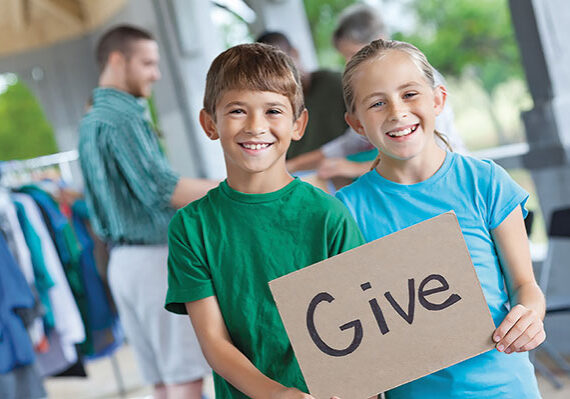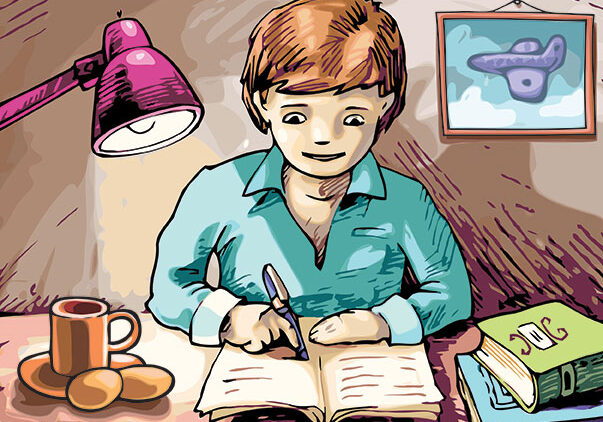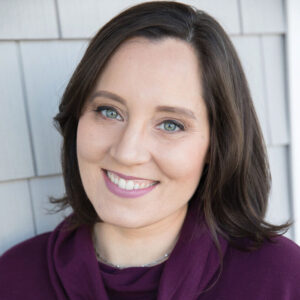It was a normal evening, full of dinner-making, homework and activity. My youngest sat at the table doing a math work sheet, my oldest was practicing her flute and my son was shooting hoops. I stood at the stove, chopping an onion for sauce. Normal.
“Mom, what happened to that man on the news? And I heard about Sandy Hook; what’s that?” my youngest asked.
I stopped chopping, grateful my back was to her and that I had been chopping an onion. One name brings fresh tears to my eyes. Even over 10 years later tears sting my eyes at the mention of that small town in my small state.
I inhaled and exhaled, perhaps taking a moment too long to answer. She was probably wondering if I heard her. How could I explain this to my little girl? How could I tell her what happened on an ordinary May day? How could I tell her that I still remember exactly where I was sitting and where she was playing as I watched the tragedy 10 years ago unfold on the news? Kids, just like my own, at school, murdered.
I turned to face her, my girl blissfully unaware of the deep heartache those two words held. Sandy Hook was no longer just a small town an hour away; it was forever engrained as a tragedy. And now my little girl wanted to know about it.

I’ve always believed in telling my children the age-appropriate truth. But I didn’t want my girl to know this. I didn’t want her to know that terrible things happen to children and sometimes we can’t understand. I wanted to protect her. But ignorance is not protection. So, I forged ahead.
I gently told her about a very sick person who made some very bad choices and murdered people in a school. Yes, many of them were children. No, it doesn’t make sense. I explained that safety is very important and we talked about all the ways her school keeps her safe, partially because of lessons learned on that tragic day.
I didn’t rush. Homework and dinner could wait. I gave her a chance to ask questions and let her keep doodling as we talked. I even grabbed a pencil and doodled a little myself. Sometimes hard things are easier to talk about when we can do something with our hands and don’t have to make eye contact.
The whole interaction took five minutes. And then she moved on. It took me a little longer as I went back to my onion.
Another day passes and another tragic story is on the news. Today it’s Texas. Recently, there was Nashville. And, sadly, the list goes on. Shootings, attacks and brutality are all part of the landscape. We are aware of it and so are our children.
Knowing how to help them can feel hard. Here are 10 practical tips to help your children when the world seems scary.
- Turn off the news. Watching the news cycle repeat over and over doesn’t help anyone. The images, repeated stories, personal accounts and police reports are difficult for children to make sense of. The news is hard for children to absorb and cope with. You can get all the news you need in one well-reported or well-written story. Then turn it off. Don’t have it running in the background. Also, be aware of switching the radio station as needed. Kids need news from you, not broadcasters.
- Ask but don’t push. Ask your child if they’ve heard about the most recent tragedy. Find out what they already know.Open the door and leave it open, but don’t force them to walk through it. Sometimes recognizing that it can be talked about is enough for one day. Let them talk when they’re ready.
- Talk about your feelings, but don’t dwell on them. Children should see that their parents feel things because it gives them permission to feel, too, especially since children don’t understand all the feelings inside themselves. Express your feelings gently without dwelling on them. Admit what you don’t understand. Model healthy ways to express your feelings.
- State your ideas concisely. It’s good for children to hear their parents’ ideas about hard subjects. It helps kids develop their own ideas. Having excessive, lengthy rants about gun control or military action is not helpful for kids. These are scary subjects for children. You can express your idea simply and ask your child what they think if it seems appropriate. For example, with a tween or teen, you could say, “I think this is why I have a hard time understanding why people need guns. Maybe I don’t know everything about it, but I don’t think the average person needs an automatic weapon. What do you think?” With a younger child something simpler like, “Who do you think should have guns?” might be a good question.
Make sure what you say is age-appropriate and offers an opportunity for your child to think and express ideas, even if they are different from your own.
- Don’t worry. I know that sounds impossible; worry is an automatic response for parents. But worrying all the time in every situation will only breed worry and fear in your child. As parents, we need to think about safety, but also decide what is appropriate to share with our children and when.
An example with young children to get them thinking calmly about safety is to say something like, “Hey, I noticed that there is an emergency exit over there. Do you see any more? It’s always good to know where they are.” With older kids it may be something different, such as, “I see a police officer over there. If I got pulled over, what do you think I should do? I always try to keep my hands on top of the steering wheel where the officer can see them so there is no confusion about what I’m doing.”
These are hard conversations and should not be the only thing we talk about. But weaving thoughts like this into our everyday lives will help our children think proactively about being safe without making them afraid of every possible situation.
- Use your hands. Sometimes it’s hard for children and even adults, to express their feelings when something scary happens in the world. Providing opportunities to work out some of their feelings helps the intensity fade a little. Working in the yard, going for a run, coloring or even using Play-Doh allows us to express feelings without the pressure to say everything.
- Give children a tangible way to help. If you are religious, go beyond the idea of praying for people and pray together. Make cards for or write letters to first responders. The tragedy may not have happened in your area, but encouraging the police, fire and EMS workers that keep us safe helps them and you. Give your child something to do that makes them feel like part of the solution.
- Answer questions honestly. Children crave information and they often feel like they don’t get the whole story. It’s OK and healthy to give them information in an age-appropriate manner. If they know they can trust you for the truth, they are more likely to come to you with their questions.
- Be grateful. The bad things that happen have a way of bombarding us. The news and public conversation all focus on the terrifying things that happen. Make sure you purpose time to look for good. It doesn’t need to be fake or cliché. Being grateful increases empathy, reduces aggression and helps with stress.
- Comfort and reassure. All of us can use some of this, especially the little ones in our lives. Make time for hugs and snuggles. Be there and be close. Your presence will help them remember that they are safe. It just may help you get through it too.
Remember, you are the safety your child craves in a world that can feel scary. Show them that you are willing to talk about the hard things and it will help you both.
Posted in: Parenting, Youth & Teen
Comment Policy: All viewpoints are welcome, but comments should remain relevant. Personal attacks, profanity, and aggressive behavior are not allowed. No spam, advertising, or promoting of products/services. Please, only use your real name and limit the amount of links submitted in your comment.
You Might Also Like...
Help! My Child Isn’t Learning
Sometimes children are born with challenges indicating they will require interventions to reach their potential. Others meet expected developmental milestones as babies, but begin showing behaviors during their toddler and […]

Positive Peer Pressure: How Friends Build Happiness
We often hear about the many negative aspects of peer pressure and worry that our children’s friends could push them down a path of troubling behavior like bullying or drug […]

A Heart For Giving
As a mother, I believe one of the most valuable gifts that I can give to my children is a heart for giving. In a society that places immense value […]

Keeping Your Child’s Love For Writing (Not Texting!) Alive
Glanced at your child’s text messages lately? No? How about her e-mails or online chats? If you take a peek, you’ll find plenty of sentence fragments, emoticons and shortcuts like […]



